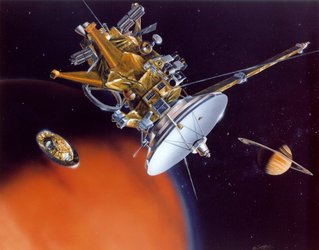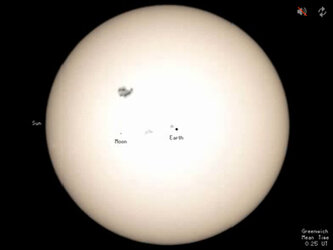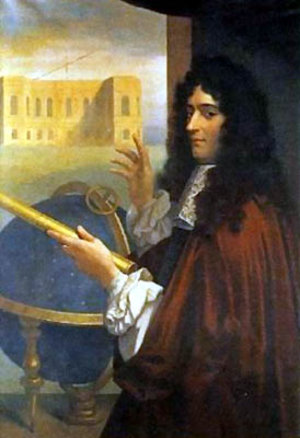How the world watched Huygens
As Huygens parachuted to the surface of Titan in January 2005, a battery of telescopes around the world were watching or listening.
The results of those observations are now being collected together and published for the first time. The work gives valuable additional context within which to interpret the 'ground truth' returned by Huygens.
Hundreds of scientists, working at 25 radio and optical telescopes situated mainly around the Pacific, from where Titan would be visible at the time of Huygens descent, observed the moon before, during and after the Huygens descent. It was one of the largest ground-based observational campaigns ever to take place in support of a space mission.
The first observations began well over a year before Huygens entered the alien world's atmosphere, when scientists used the fact that Titan would pass directly in front of two distant stars. By watching the way the light faded from the stars, scientists analysed the density, wind and temperature of Titan’s atmosphere. It helped to build confidence by confirming that the atmosphere was similar to their expectations.
A year later, telescopes monitored Titan's atmosphere and its surface at infrared wavelengths for the days and weeks around the Huygens descent. Even now, those observations are of critical importance to the scientists as they continue to interpret the data returned by the probe. "We wanted to know whether the day of the descent was a special day or not on Titan, so that we can place the Huygens data in the correct context," says Olivier Witasse, a Huygens scientist at ESA's European Space Research and Technology Centre (ESTEC) in The Netherlands.
Radio telescopes were used to track Huygens. Both Single-Dish Doppler-tracking, and a Very Long Baseline Interferometry (VLBI) observation that included 17 telescopes, were planned. Doppler-tracking was expected to complement the radio experiment onboard Huygens that used the probe-orbiter link. The VLBI project was initiated about two years before the Huygens entry as a test experiment. No one could predict for certain that the Huygens signal would be detectable but, if it were detected, it would provide unique information.
"One goal of the VLBI observation was to reconstruct the probe's descent trajectory to an accuracy of ten kilometres. At Titan's distance of more than 1 billion kilometres, this is the equivalent of determining positions with an accuracy of just three metres on our own Moon. Another goal was to demonstrate this as a new technique for future missions," says Jean-Pierre Lebreton, Huygens Project Scientist.
The radio experiments worked beyond expectations and even proved to be a 'safety net' when the reception of Huygens' second communications channel failed during the descent. The data from several of Huygens’ six experiments was lost, including that required for the Huygens radio experiment to track the winds during the whole descent. The Doppler-tracking data from the Green Bank Telescope (West Virginia, America) and from Parkes (Australia) provided real-time information about the probe's drift in the winds. The processing of the VLBI data set is not yet completed but initial results look very promising.
The combined analysis of the Huygens data with that acquired by the Cassini orbiter in the past two years allowed scientists to reconstruct the movement of the probe precisely. They pinpointed its landing to 10.33 degrees south and 192.32 degrees west. The VLBI data set will provide an independent reconstruction of the trajectory. It should help to confirm and most likely refine the whole descent trajectory and the coordinates of the landing site.
Note to editors:
The results appeared on 27 July 2006 in the Journal of Geophysical Research, in the article "Overview of the coordinated ground-based observations of Titan during the Huygens mission", by O. Witasse, J-P. Lebreton et al. (111, doi: 10.1029/2005JE002640). This issue of JGR contains 12 companion papers on results about Titan.
Huygens will certainly not be the last mission to benefit from a coordinated ground-based observational campaign. Promoting such observations is one of the main activities of the EU-sponsored Europlanet project. Jean-Pierre Lebreton, initiated the Titan coordinated observation campaign before the birth of Europlanet. "The Huygens experience is directly injected into the Europlanet activities," says Lebreton.
Europlanet's objective is to draw together planetary science research activities in Europe. "Europlanet's long-term goal is to pull together European resources to capitalise on the investments made in space missions. We will do this by promoting complementary and coordinated activities such as ground based observations, laboratory work, modelling and theory. Access to relevant archived laboratory data and ground-based data should become as easy as access to archived space-based planetary mission data," added Lebreton.
There is already an ongoing effort associated with ESA's comet chaser, Rosetta, which was launched on 2 March 2004. Rosetta's target was chosen after a prolonged series of ground-based observations. Even now, telescopes continue to monitor comet Churyumov-Gerasimenko as Rosetta cruises towards its 2014 rendezvous. A major coordinated ground-based campaign is expected when Rosetta reaches the comet.
For more information:
Jean-Pierre Lebreton, ESA Huygens Project Scientist
Email: jean-pierre.lebreton @ esa.int
Olivier Witasse, ESA Huygens scientist
Email: olivier.witasse @ esa.int















 Germany
Germany
 Austria
Austria
 Belgium
Belgium
 Denmark
Denmark
 Spain
Spain
 Estonia
Estonia
 Finland
Finland
 France
France
 Greece
Greece
 Hungary
Hungary
 Ireland
Ireland
 Italy
Italy
 Luxembourg
Luxembourg
 Norway
Norway
 The Netherlands
The Netherlands
 Poland
Poland
 Portugal
Portugal
 Czechia
Czechia
 Romania
Romania
 United Kingdom
United Kingdom
 Slovenia
Slovenia
 Sweden
Sweden
 Switzerland
Switzerland






































